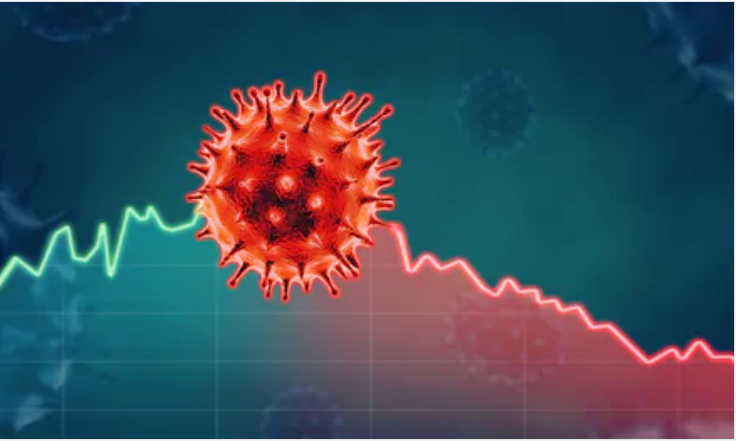By announcing on Monday 9 November that its candidate vaccine developed in partnership with the German company BioNTech, was 90% effective against Covid-19, Pfizer generated high hopes. These were mirrored just a few days later with the positive news from the Moderna laboratory. A future characterised by long-term uncertainty gave way to hopes of an improvement in the health situation and therefore the economic situation in 2021. This good news was immediately echoed by the news channels, radio stations and the press. However, far from the mainstream media, this announcement also generated a wave of scepticism and even sensational warnings on the social networks, including in France.
The widespread dissemination of “anti-vax” messages on the social networks
This anti-vaccine movement became widespread, spawning communities on Facebook, Twitter, YouTube and Instagram. These communities have their spokespeople, starlets and influencers including the reality TV star Kim Glow, their B-listers and hordes of messengers to carry anxiety-provoking messages combining conspiracy theories and a rejection of established scientific positions. A study in May 2018 by Antidox[i] showed the importance of anti-vaccine movements on the social networks, with messages attacking the justification for and safety of the vaccination process. Out of the 250,000 articles shared on Facebook, 46,000 tweets and 1,500 discussions logged each month, most carried an anti-vaccination message. At the height of the Covid-19 pandemic, the “antivax” groups appear to be becoming more virulent and gaining audience share, leading to the “provax” lobby becoming somewhat marginalised. The success of the conspiracy theory documentary “Hold-up” widely discussed on the social networks clearly illustrates the scale of this phenomenon. The rising din from these movements has generated many questions and fears, as reported by the Prime Minister, who is concerned about the reticence of the French population to get vaccinated, thereby prolonging the epidemic in this country.
The way the social networks operate is leading to a radicalisation of opinions
The curves shown above are very enlightening. The first shows the sudden increase in mentions of Pfizer on Twitter between 8 and 16 November, proving that the announcement of the vaccine has generated great interest in the twittersphere. The second measures the tone of the messages posted, with green indicating a positive opinion, while brown on the contrary indicates a negative post. A quick glance is all it takes to measure the general tone, which was particularly negative, following the announcement of news which should have been a source of joy and relief to us all. An initial positive reaction viewed on 10 November results in an avalanche of critical tweets, from simple warnings to messages containing the most extreme conspiracy theories. However, the “fake news” peddled online by the most determined members of the “antivax” movement nevertheless has consequences when we consider the general opinions of the population. Although 15% of French people state that they are resolutely hostile to vaccines, the battle will be fought or lost with the large mass of undecided individuals, who seem increasingly impervious to the antivax message. The algorithms for the platforms which select the forums presented to the servers only exacerbate the trend: a question about vaccines takes the surfer to exclusively anti-vaccine spheres, where critical speech no longer exists. This way of operating in enclosed silos of ideological communities bonding their members together with conspiracy theory-type behaviour leads to a radicalisation of opinions. Our fellow countrymen then end up dreading the launch of a vaccine promoted by the health authorities even more than infection by the Covid-19 virus.
Developing and circulating a counter argument
In such a climate, how do you combat this phenomenon? Firstly, working to modernise the platforms, which may limit excesses. Facebook prohibits anti-vaccine posts, and warnings may be added to the most aggressive assertions. The opinions of the scientists and the associations working in the medical field also continue to be seen as vitally important. A message of truth and transparency can still have a real impact on condition that it is circulated across the social networks. Though insufficient, fact checking is vital. But we need to go further. Because for surfers enclosed in their communities, input from experts will be immediately rejected and can even help fuel conspiracy theories. Rational thought is no longer effective in this particular population. Because as with the religious radicalisation phenomenon, it’s important to prepare and circulate a counter argument. This can only be effective if it is based from the outset on a detailed analysis of all variants of the anti-vaccine messages. It’s then necessary to find a form a rhetoric which will work among the same audiences to pick apart the arguments. “Debunking” which involves picking apart fake news, is a vital stage in the process of returning to rational, peaceful debate. Finally, such a mission requires technical expertise, which should not be underestimated: it’s important to know how to use the social networks to more widely disseminate the message, including within those communities most reluctant to hear it. This message needs to be disseminated on the main platforms, not only Twitter or LinkedIn, but also Facebook, Instagram, Tik Tok or Snapchat. It’s also important to draw upon websites consulted by young audiences, such as melty. And to find influential channels to help reach the audience you wish to convince. In brief, a sophisticated influencing strategy must therefore be deployed. Its aim is to open the victims’ eyes to the conspiracy-theory message and to promote public health.
By Julien Malbreil-Partner










